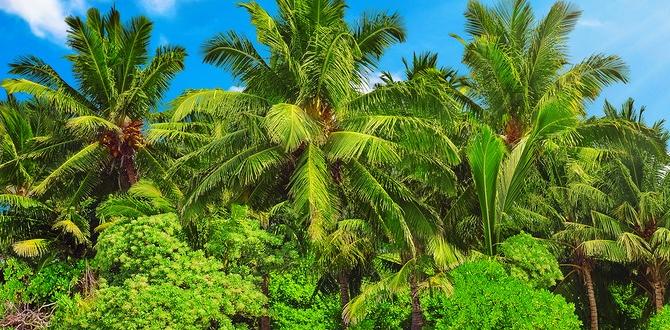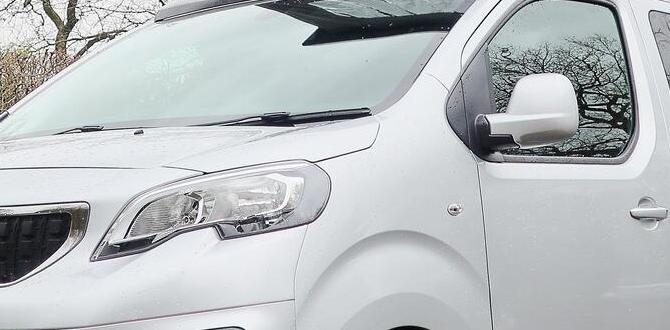Bavaria sunrise & sunset photo spots are plentiful, offering photographers stunning natural light painting iconic landscapes. Discover key locations like Neuschwanstein Castle and the Bavarian Alps for unforgettable golden hour shots.
Bavaria, a land of fairytale castles and breathtaking mountains, truly comes alive during the golden hours. Capturing a Bavarian sunrise or sunset can be a magical experience, but knowing where to go makes all the difference. Frustrated by arriving at a location only to find it overcrowded or lacking the perfect vista? You’re not alone. Many travelers dream of that perfect shot silhouetting a castle or bathing a mountain peak in warm light, but the best spots aren’t always obvious. This guide will lead you to the most spectacular sunrise and sunset locations in Bavaria, ensuring your travel photos are as vibrant and memorable as your journey itself. Get ready to elevate your travel photography with these insider tips.
Why Sunrise and Sunset Photography in Bavaria is Special
The magical quality of light during sunrise and sunset, often called the “golden hour,” transforms familiar landscapes into something extraordinary. In Bavaria, this effect is amplified by the region’s dramatic scenery. Think of the warm hues of the setting sun casting long shadows across rolling green hills, or the first rays of morning light illuminating the majestic spires of a medieval castle. This spectacle is not just beautiful; it’s a photographer’s dream. The softer, warmer light is far more flattering for landscapes than the harsh midday sun. It creates depth, texture, and a sense of awe that’s hard to replicate at any other time of day. For travelers, these times also offer a more peaceful experience, often with fewer crowds than during peak daylight hours, allowing for a more contemplative and enjoyable moment with Bavaria’s beauty.
Understanding Bavarian Light: A Photographer’s Primer
Bavarian light, especially during sunrise and sunset, possesses a unique character shaped by its geography and climate. The crisp, alpine air often contributes to clearer skies and more vibrant colors. However, the dramatic peaks of the Alps can also create striking silhouettes and unique light patterns as the sun dips below or rises above them.
Here’s a quick breakdown of what to expect:
Sunrise: Often brings a cool, crisp light that can highlight the details of rocky landscapes and dew-kissed meadows. As the sun ascends, warmer tones begin to appear, bathing the eastern-facing facades of castles and mountains in a gentle glow.
Sunset: Typically offers warmer, richer colors. Oranges, reds, and pinks can paint the sky, reflecting beautifully off lakes and illuminating the western sides of mountains. The long shadows cast can add a dramatic flair to your compositions.
Seasonal Variations: Winter sunrises and sunsets can be particularly dramatic with snow-covered landscapes, while autumn offers rich, warm foliage. Summer can bring softer, diffused light or intense, vibrant sunsets.
Knowing these nuances helps you anticipate the type of light you’ll encounter and plan your compositions accordingly. It’s always a good idea to check local weather forecasts, as cloudy skies can produce equally stunning, though different, diffused light effects.
Essential Bavarian Sunrise & Sunset Photo Spots
Bavaria is brimming with iconic locations that transform into photographic masterpieces at dawn and dusk. Here are some of the must-visit spots for capturing that perfect Bavarian sunrise or sunset.
1. Neuschwanstein Castle: The Fairytale Icon
No Bavarian photo tour is complete without a visit to Neuschwanstein Castle. While it’s a popular spot year-round, sunrise and sunset offer a magical, less crowded experience. The warm light of dawn or dusk can make the castle appear as if it’s truly floating amidst the Bavarian Alps.
Sunrise: The Marienbrücke (Mary’s Bridge) offers a classic, postcard-perfect view. Arriving before dawn allows you to set up your tripod and capture the first light hitting the castle towers. The soft morning light illuminates the castle walls and the surrounding forested valleys.
Sunset: The same vantage point from Marienbrücke is excellent for sunset. You can catch the castle bathed in golden hues as the sun dips behind the western mountains. Alternatively, explore viewpoints from lower down the hillside for a different perspective, perhaps including the alpsee lake in the foreground.
Pro Tip: Check the castle’s opening and closing times, as access to Marienbrücke may be restricted outside these hours. Also, the walk to the bridge can be steep, so wear comfortable shoes.
2. Linderhof Palace: Intimate Elegance at Golden Hour
Linderhof Palace, a smaller, more intimate royal residence, offers a different kind of charm. Its Rococo design and meticulously landscaped gardens are stunning under the soft glow of sunrise or sunset.
Sunrise: The eastern gardens and the Venus grotto can be beautifully lit by the rising sun. This is a quieter spot, allowing for more personal reflection and unhurried photography. The intricate details of the palace facade and fountains are highlighted.
Sunset: The west-facing side of the palace and the terraces offer excellent opportunities. Capture the sun setting behind the surrounding hills, casting a warm light on the reflective surfaces and statues within the gardens.
Tip: Linderhof is set in a more secluded valley, so the light can be softer and more diffused, creating a dreamlike atmosphere.
3. Zugspitze: The Roof of Germany at Sunrise
For panoramic views that stretch across the Alps, the Zugspitze, Germany’s highest peak, is unparalleled. Reaching it via cable car or cogwheel train early in the morning is an unforgettable experience.
Sunrise: Witnessing the sunrise from the Zugspitze is a bucket-list item. The first light hitting the surrounding peaks is breathtaking. You get a 360-degree view, with sunbeams catching the snow-capped mountains. This requires a very early start and checking the first cable car times.
Sunset: While less common due to the need for timely descent, those who manage to stay could capture incredible sunset views. However, safety and operational hours are paramount.
Important Note: Check the operating hours for the cable cars and cogwheel trains in advance, as they vary seasonally. Dress in warm layers, as it is significantly colder at the summit.
4. Königssee: The Royal Lake and Its Echo
Königssee, a stunning emerald-green lake nestled in the Berchtesgaden Alps, is famous for its reflections and the haunting echo. The surrounding dramatic cliff faces create a natural amphitheater.
Sunrise: The eastern side of the lake, looking towards the St. Bartholomä peninsula, is ideal for sunrise. The gentle light illuminates the sheer rock faces and can create beautiful soft reflections on the still water. Boat tours often start early, offering unique angles from the water.
Sunset: The western shores and hills offer views as the sun descends behind the mountains, painting the sky and casting long shadows across the lake. The St. Bartholomä church is a picturesque subject in this light.
Tip: Consider taking an electric boat tour on the lake. The early morning silence and the soft light on the water and rock walls are incredibly serene.
5. Partnach Gorge (Partnachklamm): Dramatic Light in a Natural Wonder
Partnach Gorge is a narrow, deep gorge carved by the Partnach River. The towering rock walls create a dramatic, shaded environment, making the light that filters in especially striking.
Sunrise: While direct sunlight may not reach the deepest parts of the gorge at sunrise, the light filtering in from the top can create dramatic shafts and illuminate the water and mossy rocks. It offers a unique, moody atmosphere.
Sunset: Similar to sunrise, direct light is limited, but the softer, ambient light can still create beautiful, atmospheric shots, highlighting the textures of the rock and the power of the water.
Visitor Information: Access to the gorge involves a walk, and there is an entrance fee. Wear waterproof gear as it can be damp inside. The light here is about diffusion and atmosphere rather than direct beams.
6. Walchensee: Alpine Lake Serenity
Walchensee is one of the largest high-alpine lakes in Germany, known for its clear turquoise waters and surrounding mountains. It’s a fantastic spot for capturing reflections.
Sunrise: The eastern shores offer views as the sun rises over the Herzogstand mountain. The calm waters often provide perfect reflections of the sky and mountains, amplified by the morning light.
Sunset: The western side of the lake provides opportunities to photograph the sun setting behind the mountains, casting a warm, golden glow across the water and landscape. Look for viewpoints from cafes or paths along the shore.
Activity Suggestion: Renting a kayak or paddleboard early in the morning or late in the afternoon can provide unique shooting perspectives from the water itself.
7. Bavarian Alps Foothills & Countryside
Beyond the famous landmarks, the rolling hills, meadows filled with wildflowers, and traditional Bavarian farmhouses in the foothills of the Alps offer endless photo opportunities.
Sunrise: Find a viewpoint over a valley or a picturesque farm. The soft morning light will illuminate the dew-kissed fields and create a gentle, idyllic scene. Long shadows will stretch across the landscape.
Sunset: Position yourself to have the sun setting behind a charming village or a distinctive mountain peak. The warm, angled light will bring out the textures of the landscape and add a glowing effect to any scattered clouds.
Finding these spots: Simply drive along scenic routes and pull over where you find a particularly appealing vista. Many of these areas are accessible via well-maintained hiking trails.
Planning Your Sunrise/Sunset Photography Trip
Successful sunrise and sunset photography requires a bit of planning. Here’s how to maximize your chances of capturing stunning shots:
1. Check the Weather and Light Forecasts
Sky conditions significantly impact the final image. While a clear sky is great, some clouds can add drama and color. Websites and apps dedicated to weather and astronomical data can predict sunrise/sunset times and even sunrises and weather patterns. Knowing the times for civil, nautical, and astronomical twilight can also offer unique lighting conditions.
Sunrise/Sunset Times: Apps like PhotoPills or The Photographer’s Ephemeris are invaluable tools.
Cloud Cover: Check general Met services like the Deutscher Wetterdienst (DWD) for accurate forecasts.
2. Scout Your Location (If Possible)
If you have time, visit your chosen spot during the day to understand the terrain, identify potential compositions, and note any obstacles. This reconnaissance saves valuable time and stress when you’re there in the dark or low light.
Daytime Recon benefits:
Identify the best angles.
Observe the play of light.
Note any foreground elements that could enhance the shot.
Understand the accessibility and any walking required.
3. Gear Up Appropriately
Packing the right gear ensures you’re prepared and comfortable, allowing you to focus on the photography.
Camera: A DSLR or mirrorless camera with manual controls.
Lenses: A versatile zoom lens (e.g., 24-70mm) and a wide-angle lens (e.g., 16-35mm) are excellent choices.
Tripod: Essential for stability in low light, preventing blurry shots.
Remote Shutter Release or Timer: Minimizes camera shake when triggering the shutter.
Extra Batteries: Cold weather drains batteries faster, and you won’t want to miss a shot.
Headlamp or Flashlight: Crucial for navigating in the dark to and from your spot.
Comfortable, Sturdy Footwear: You’ll likely be walking on uneven terrain.
Warm Layers of Clothing: Bavarian weather can change quickly and can be cold, especially at higher elevations or near lakes.
Waterproof Jacket: Just in case.
4. Be Prepared for the Elements and Timing
Arriving early is key. For sunrise, you might need to leave your accommodation well before dawn. For sunset, allow ample time to reach your spot and set up before the light fades.
Sunrise: Aim to arrive at least 30-45 minutes before the official sunrise time to capture the pre-dawn glow.
Sunset: Be in position at least 45-60 minutes before sunset to capture the changing colors and the “blue hour” that follows.
5. Safety First
When shooting in low light or darkness, especially in natural environments like mountains or gorges, safety is paramount. Stick to marked paths, let someone know where you’re going, and be aware of your surroundings.
Key Safety Considerations:
Know your route.
Be aware of wildlife.
Check for any safety barriers or warnings.
Carry a fully charged mobile phone.
What to Expect: A Sunrise vs. Sunset Comparison
While both are magical, sunrise and sunset photography in Bavaria offer distinct experiences and photographic opportunities.
| Feature | Sunrise in Bavaria | Sunset in Bavaria |
| :—————- | :—————————————————— | :——————————————————- |
| Light Quality | Cooler, crisp, often softer tones; can be dramatic with fog. | Warmer, golden, fiery hues; vibrant reds and oranges. |
| Atmosphere | Serene, calm, awakening; often fewer people. | Often more dynamic, with lingering golden light; can be busier. |
| Subject Focus | Illuminates eastern-facing sides; can be challenging with shadows. | Illuminates western-facing sides; offers long shadows and silhouettes. |
| Best For | Peaceful reflection, capturing misty valleys, crisp mountain light. | Dramatic skies, vibrant colors, silhouetting castles, warm landscapes. |
| Practicalities | Requires very early start; can be cold and dark. | Easier timing logistically; longer daylight hours before it. |
Beyond the Postcard: Capturing the Essence of Bavaria
While iconic spots like Neuschwanstein are stunning, don’t overlook the charm of more understated locations. Sometimes, the most memorable shots come from quiet moments capturing local life bathed in the golden hour.
Village Charm: Find a small Bavarian village, perhaps with a church steeple, and frame it with the setting sun. The warm light can make even simple houses look magical.
Rural Life: Photograph a traditional farmstead with cows grazing in a field, all bathed in soft, golden light. This captures the agricultural heart of Bavaria.
Lake Reflections: Many smaller lakes offer incredible reflections without the crowds of Königssee. Explore the shores for your own perfect mirror image.
Embrace the Imperfect: When Plans Don’t Go As Expected
Travel rarely goes exactly as planned, and that’s part of the adventure. What if it’s cloudy? What if the location is unexpectedly closed?
Embrace the Clouds: Overcast skies can create a soft, diffused light that is flattering for many subjects. Think about moody landscapes, dramatic fog in valleys, or even artistic portraits.
Adapt Your Location: If your primary spot is inaccessible, be open to discovering a new, unplanned gem. Sometimes, the best discoveries are made when you have to change course.
Focus on Details: Even with less-than-ideal light, you can focus on textures, patterns, and smaller details in the landscape that might be overlooked in perfect light.
Remember, the goal is to capture the feeling of Bavaria. Even a slightly less-than-perfect sunset can be a beautiful memory when framed by good storytelling and personal experience.
Frequently Asked Questions
What is the best time of year for sunrise and sunset photography in Bavaria?
While Bavaria is beautiful year-round, autumn (September-November) offers stunning foliage colors that complement warm light, and winter (December-February) provides dramatic snow-covered landscapes. Spring (March-May) sees wildflowers bloom, and summer (June-August) provides long daylight hours, though light can sometimes be hazy. Each season offers unique opportunities.
Are there specific times of day to avoid for photography in Bavaria?
Midday sun is generally harsh and creates strong, unflattering shadows, making it less ideal for landscape photography. However, it can be useful for close-ups or specific architectural details. The “golden hours” – shortly after sunrise and before sunset – are almost always the most photogenic times.
How can I get to Neuschwanstein Castle for sunrise?
Accessing Neuschwanstein for sunrise requires a very early start. You can drive to Hohenschwangau (where the castle is located) and then walk up to Marienbrücke (about 20-30 minutes uphill). Check castle operating hours, as the pathway to the bridge may have access restrictions. Parking during the night might also require special arrangements or finding a nearby town.
What should I wear for a sunrise or sunset shoot in the Bavarian Alps?
Layering is essential. Wear thermal base layers, a warm mid-layer (like fleece), and a waterproof/windproof outer shell. Comfortable, sturdy hiking boots are a must given the terrain. Don’t forget a hat and gloves, even in milder seasons, as temperatures can drop quickly.
Can I take photos inside Bavarian castles?
Photography rules vary by castle and even by specific rooms. Many castles, like Neuschwanstein, permit photography without flash in most areas of the public tour route, but tripods and professional video equipment are often prohibited. Always check the specific regulations of the site you are visiting. Some palaces may have additional restrictions.
What if I’m traveling with children and need to manage personal care needs, like diapers?
For stress-free travel, especially on early morning or late evening photo excursions, having reliable personal care items can make a huge difference. For adults or children who might need them, carrying comfortable, absorbent adult diapers






